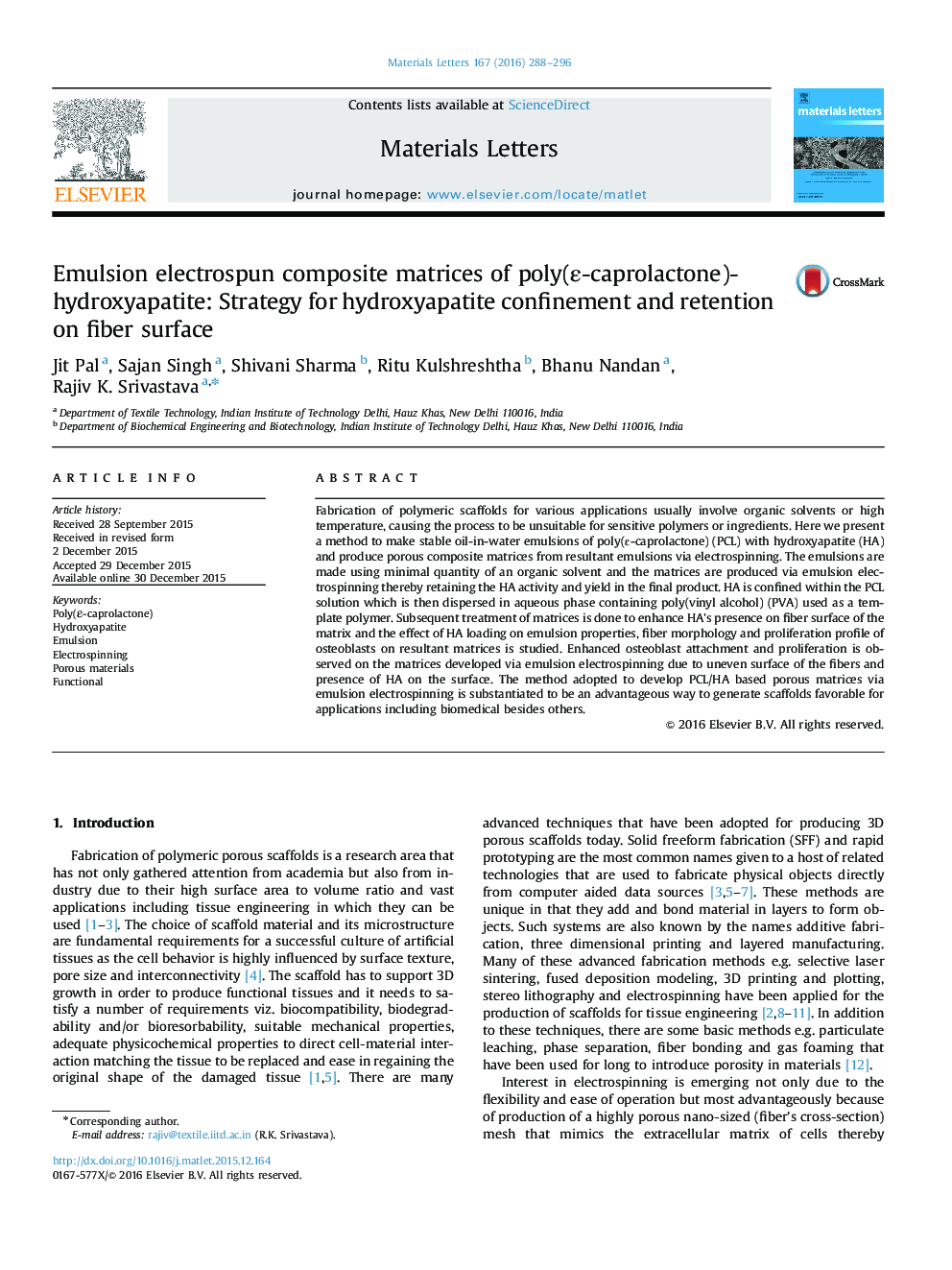| Article ID | Journal | Published Year | Pages | File Type |
|---|---|---|---|---|
| 1642133 | Materials Letters | 2016 | 9 Pages |
Fabrication of polymeric scaffolds for various applications usually involve organic solvents or high temperature, causing the process to be unsuitable for sensitive polymers or ingredients. Here we present a method to make stable oil-in-water emulsions of poly(ɛ-caprolactone) (PCL) with hydroxyapatite (HA) and produce porous composite matrices from resultant emulsions via electrospinning. The emulsions are made using minimal quantity of an organic solvent and the matrices are produced via emulsion electrospinning thereby retaining the HA activity and yield in the final product. HA is confined within the PCL solution which is then dispersed in aqueous phase containing poly(vinyl alcohol) (PVA) used as a template polymer. Subsequent treatment of matrices is done to enhance HA's presence on fiber surface of the matrix and the effect of HA loading on emulsion properties, fiber morphology and proliferation profile of osteoblasts on resultant matrices is studied. Enhanced osteoblast attachment and proliferation is observed on the matrices developed via emulsion electrospinning due to uneven surface of the fibers and presence of HA on the surface. The method adopted to develop PCL/HA based porous matrices via emulsion electrospinning is substantiated to be an advantageous way to generate scaffolds favorable for applications including biomedical besides others.
